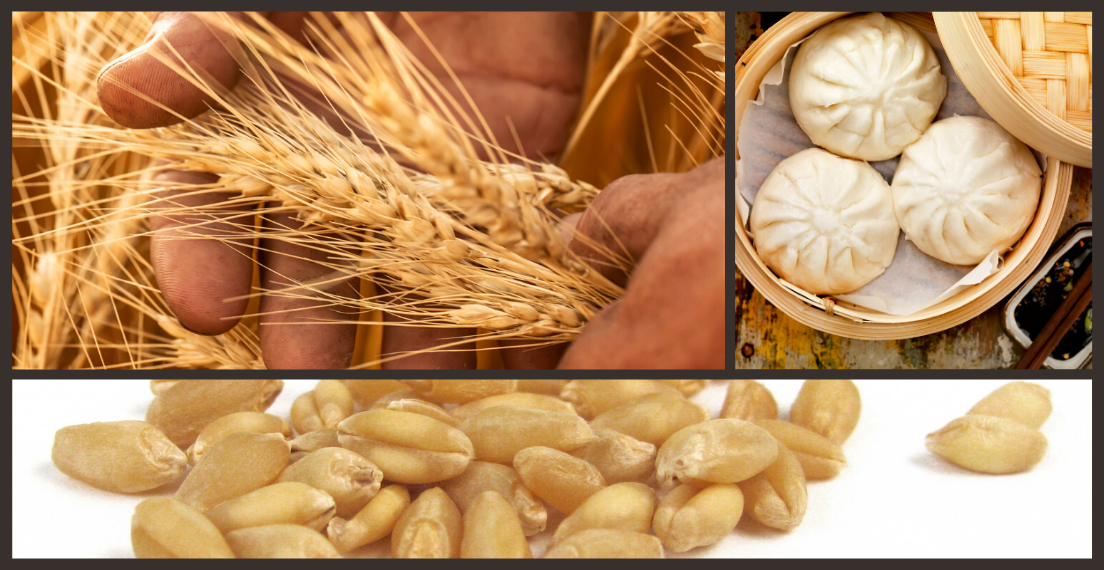In the increasingly competitive global wheat market, it is important to review the advantages that U.S. wheat delivers to millers and bakers. This post examines the advantages that hard white wheat brings to the market.
Hard white (HW) wheat is the smallest class of wheat grown in the United States, with an annual average production over the last five years of 822,413 metric tons (MMT), about 30.2 million bushels. U.S. HW is the newest wheat class and has developed a strong niche for whole wheat flour products in the U.S. domestic market. In addition, HW varieties are bred to yield flour for both bread and Asian noodles.
The strong demand for a specific use and the relatively small production has created a market where most HW is grown under contract with domestic U.S. milling companies to assure quality standards and provide a premium price incentive to farmers. It is also important to mention that HW wheat includes winter and spring varieties, increasing the protein range and functionality within the class.
Milling Advantages
U.S. hard white wheat performs in the mill much like hard red winter (HRW) wheat. The most apparent HW benefit is higher extraction levels of whiter flour due to its lighter bran color. Higher extraction rates generally improve flour water absorption, benefiting the baker. HW is a true hard wheat creating an advantageous granulation in the primary breaks for the production of coarse semolina, increasing the production of low ash flour.
Baking and Processing Advantages
The most significant advantage of hard white wheat is the quality of baked products made from hard white wheat flour. As mentioned, one of the primary uses of hard white flour in the U.S. baking industry is for whole wheat products. By using ultra-fine white whole wheat flour, whole wheat bread can be produced with the color and texture of traditional bread. This has created a large demand for white whole wheat flour in school lunch programs and other products promoting the health benefits of whole wheat flour and its acceptable taste to children.
Another advantage of HW wheat flour is its low polyphenol oxidase (PPO) content. PPO is an enzyme that can cause the browning of dough. Lower PPO content improves the color of wet noodles and Asian steamed bread products. The starch-pasting characteristics of some HW varieties, as measured by amylograph values, are also an essential trait for noodle production. High peak viscosity is associated with desirable texture characteristics in noodles.
Sourcing Challenges
With all the advantages of HW to the milling and baking industry, the market has challenges in determining its value. Most hard white wheat is grown under production contracts by U.S. milling companies. It is also grown predominantly in the Great Plains, adding to the challenge of marketing HW to Asian customers sourcing wheat off the West Coast. The small size of the HW planted acres creates challenges for a volume-based grain handling system. The need to segregate HW from HRW or hard red spring (HRS) wheat adds cost to the elevators due to the time required to clean equipment and bins. It can also be difficult to accumulate enough quantity to fill a ship hold or a complete unit train. These challenges require creativity and flexibility from both the buyer and seller, who must work together to pull HW wheat through the market and encourage the wheat producer to increase HW wheat planted acres.
U.S. Wheat Advantages
As we highlight each specific class in this series, let us not forget the advantages that all U.S. wheat classes bring to the market. First, and perhaps the most important, is consistency in quality and supply. Although each new crop year brings different challenges and opportunities, U.S. wheat is always available to the global market. Second, U.S. wheat delivers variety. Wheat is a raw material manufactured into a bakery ingredient, flour. The flour made from each unique class of U.S. wheat brings value to the market in the unique quality characteristics to make a variety of baked goods and noodles. It is also important to understand the value of blending flour from one or more types of wheat to optimize the flour performance at a minimal cost.
Each region, country, and culture have wheat-based food products that are uniquely their own. With six unique wheat classes, the United States has the right wheat class to deliver the optimal quality and value for every variety of product on the market.
Learn more about the six classes of U.S. wheat here or leave a question in the U.S. Wheat Associates’ “Ask The Expert” section.
By Mark Fowler, USW Vice President of Global Technical Services
Read more about other U.S. wheat classes in this series.
Hard Red Winter
Hard Red Spring
Soft White
Soft Red Winter
Durum


